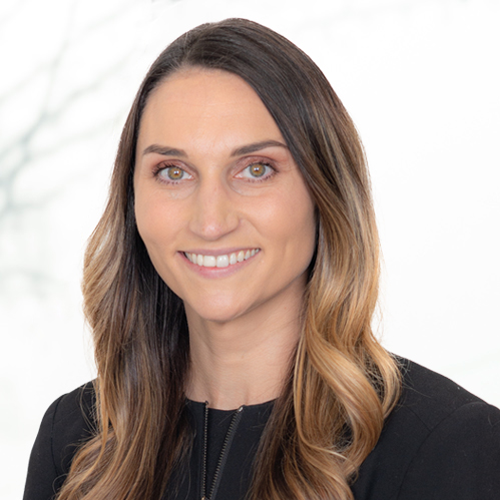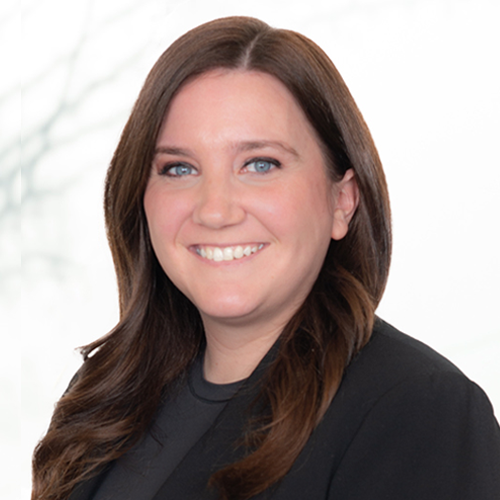Author Christa Jacqueline Groshek On Juvenile Law
Our founding attorney, Christa Groshek co-authored a legal reference book regarding juvenile criminal defense strategies.
The Wisdom Of Juvenile Court: The Case For Treating Children Differently Than Adults
Christa Jacqueline Groshek
Founder, Attorney And Managing Partner
Groshek Law PA

(c) 2012 Aspatore Books from Thomson Reuters Westlaw. Reproduced by permission
Introduction
When I started practicing in juvenile court, I was self-conscious because at age 25, I was still a child myself in many ways. In some cases, my clients had more life experience than I did. Most of the time, I was dealing with “children” who had the survival skills of streetwise adults. It took me a while to find my style and relax with them, but when I did, I found I earned the trust of my hardened youngster clients. This trust went a long way in defending them. (One client, however, stands out in my mind because he was so hostile that during our first four meetings, he sat and smashed ketchup packets and then commented about how it looked like my blood. We eventually worked brilliantly together, and he was acquitted.)
I did not know then, but earning my clients’ trust was just the first hurdle. What I learned during my first few years of practice as I worked with juveniles is that the court system and the laws enveloping it are complex; the stakes are high; and the relationships in all directions are multifaceted. It became apparent to me that practicing law was much different in juvenile court than adult court.
To be successful as an attorney in this arena, you must:
- Learn new procedural rules and be comfortable teaching judges about the intricacies of such rules
- Become familiar with child psychology and the brain development of juveniles
- Research programming resources and options for children in need of treatment
- Develop a panel of trusted experts to whom you can refer your clientele for specialized forensic evaluations
- Slow down and take the time to educate your client and the child’s family
- Tirelessly litigate certification motions
- Learn about the limits of juvenile court confidentiality and how juvenile adjudications will affect your client in the future
- Be mindful of collateral consequences of adjudications
In sum, it takes a dedicated practitioner to practice juvenile law skillfully. It is not as simple as deciding that because you practice adult criminal defense, you are prepared to take on representation of your buddy’s kid in juvenile court. It is an undertaking that will challenge and stretch you, and it is by far one of the most rewarding aspects of my practice.
Adolescent Brain Development Dictates That Children Be Treated Like Children, Not Adults
Adolescence is a transitional period during which a child is becoming, but is not yet, an adult. An adolescent is at crossroads of changes where emotions, hormones, judgment, identity, and the physical body are so in flux that even parents and experts struggle to fully understand. As a society, we recognize limitations of adolescents and therefore restrict their privileges to vote, serve on a jury, consume alcohol, marry, enter into adult contracts and even watch movies with “adult content.” 1
In the same vein, the first juvenile court was developed in 1889, recognizing that children are more and more different from adults and as such should be treated differently. 2 The goal of juvenile court in Minnesota is to employ the “least drastic step necessary to restore law-abiding conduct in the juvenile.” 3 This goal differs dramatically from the aim to punish offenders in adult court in an effort to maintain public safety. However, across the nation, juveniles charged with and convicted of serious offenses are being treated more like adults via certification motions and hybrid juvenile court disposition options that employ a stayed adult sentence, which can result in children serving prison time and having felonies on their records permanently.
This trend to treat children like adults is alarming, given that the adolescent brain is not fully formed or functional. It is clear from research that this impacts an adolescent’s culpability. Researchers at Harvard Medical School, the National Institute of Mental Health, the University of California, Los Angeles (UCLA) and others have collaborated to “map” the development of the brain from childhood to adulthood and examine its implications. 4 The scientists, to their surprise, discovered that the teenage brain undergoes an intense overproduction of gray matter (the brain tissue that does the thinking). Then, a period of “pruning” takes over, during which the brain discards gray matter at a rapid rate. This process is similar to pruning a tree: cutting back branches to stimulate health and growth. In the brain, pruning is accompanied by myelination, a process in which white matter develops. (White matter is the fatty tissue that serves as insulation for the brain’s circuitry, making its operation more precise and efficient.)
Researchers have carefully scrutinized the pace and the severity of these changes and have learned that they continue into a person’s 20s. Dr. Elizabeth Sowell, a member of the UCLA brain research team, has led studies of brain development from adolescence to adulthood. She and her colleagues found that the frontal lobe undergoes far more change in adolescence than at any other stage of life. It is also the last part of the brain to develop, which means that even as they become fully capable in other areas, adolescents cannot reason, as well as adults and therefore are far more impulsive. 5 Dr. Deborah Yurgelun-Todd of Harvard Medical School has studied the relationship between these new findings and teen behavior and concluded that adolescents often rely on emotional parts of the brain, rather than the frontal lobe. She explains, “One of the things that teenagers seem to do is respond more strongly with gut response than they do with evaluating the consequences of what they are doing.” 6
This discovery gives us a new understanding into juvenile delinquency. The frontal lobe is “involved in behavioral facets germane to many aspects of criminal culpability,” explains Dr. Ruben C. Gur, neuropsychologist and director at the Brain Behavior Laboratory at the University of Pennsylvania. “Perhaps the most relevant is the involvement of these brain regions in the control of aggression and other impulses… Indeed age 21 or 22 would be closer to the “biological age of maturity.” 7
The adolescent brain’s physical function is not up to par in comparison with fully developed adult brains. A developing adolescent brain will sustain changes in its neurotransmitters, such as dopamine, which influences memory, concentration, problem-solving and other mental functions. Dopamine is not at its most effective level in adolescence, so adolescent behavior often involves impulsive risk-taking. In addition to the profound physical changes of the brain, adolescents also undergo dramatic hormonal and emotional changes. One of the hormones that has the most dramatic effect on the body is testosterone. Testosterone, which is closely associated with aggression, increases tenfold in adolescent boys. 8
Adding the profile of a developing brain to an injurious environment increases the chances that a juvenile will be in trouble with the law. These risk factors include, but are not limited to, exposure to being witness to domestic violence or substance abuse within the family, being poorly supervised, and being the victim of physical or sexual assault. Dr. Chris Mallett, public policy director at Bellefaire Jewish Children’s Bureau in Ohio, recently completed the most comprehensive study of traumatic experiences in the lives of juvenile death row offenders to date. He found:
- 74 percent experienced family dysfunction
- 60 percent were victims of abuse and neglect
- 43 percent had a diagnosed psychiatric disorder
- 38 percent suffered from substance addictions
- 38 percent lived in poverty 9
Even the U.S. Supreme Court acknowledges that juveniles “are more vulnerable or susceptible [than adults] to negative influences and outside pressures, including peer pressure… This is explained in part by the prevailing circumstance that juveniles have less control, or less experience with control, over their own environment.” With this reasoning in mind, Justice Kennedy authored the opinion Roper v. Simmons, 10 which outlawed the death penalty for juveniles. Kennedy further cited scientific and sociological studies on the “underdeveloped sense of responsibility found in youth.”
The Supreme Court was right about outlawing the death penalty for juveniles. But why would society deem it just to treat adolescents as adults, given these biological shortcomings? All of these discoveries about brain development, the emotional impact of hormones on decision-making, and the complicating aspect of environmental stressors support the premise that children should be treated like children, not adults. It calls into question the merits of the trend to certify juvenile offenders into adult court, where punishment and imprisonment are the goals. To the contrary, these studies support the assertion that adolescents are less morally culpable for their actions than competent adults and are more capable of change and rehabilitation. 11 Now more than ever, it is imperative that skilled advocates educate courts about why children should remain in the juvenile system.
The Nuts And Bolts Of Juvenile Court Jurisdiction
The Use Of Adult Certification Or “Waiver” Into Adult Court
While the U.S. Supreme Court has outlawed the death penalty for juveniles, many states are turning to certifying children into adult court and treating them like adult offenders by requiring them to serve lengthy prison sentences with scant programming and rehabilitation. Forty-five states have laws that allow juveniles to be certified into adult court. 12 Some studies reflect that “nearly 50% of juvenile offenders transferred to the adult criminal justice system reoffend upon release after they turn 18.” 13 Additionally, in 34 states, once a child is certified into adult court, the child is “automatically” certified on subsequent cases. 14 The 2009 Annual Survey of Jails found that the nation’s jails held a total of 7,220 inmates who were younger than 18 years of age, including 5,847 who had been tried or were awaiting trial as adults. 15
In Minnesota, there are three different types of dispositions, or “sentences”:
- A juvenile court jurisdiction, where a child can be placed on probation until age 19
- Extended Juvenile Jurisdiction (EJJ, or “blended” jurisdiction), where a child can be placed on probation until age of 21, with a juvenile sentence upfront and a stayed adult sentence that can be revoked for noncompliance
- Adult certification, where a child is sent to adult court
Forty-four states and the District of Columbia regard children as young as 14 years of age mature enough to be tried and sanctioned as adults if convicted. 16 Thirty-two states provide for “blended” sentencing for juveniles. 17
Prosecutors frequently bring motions to certify children into adult court. There, they are treated as if they are adults, and, specifically, they are subject to the same mandatory prison sentences if convicted. Many other states employ the same protocol with such regularity that they have developed “special sentencing guidelines for juveniles” such as in Washington. Other states, like Ohio, Arkansas and Virginia, are studying the merits of using such a system to sentence juveniles within the adult system. Additionally, it is interesting to note that juveniles transferred into adult court are far more likely than adults to be convicted of a violent felony. According to a 1996 study by Levin, Lange and Brown, 53 percent of certified juveniles were convicted of violent offenses, while only 17 percent of adults were convicted of the same. 18
Once immersed in juvenile court, and in your client’s history, life story, offense characteristics and probation programming options, it is simple to see that there is no one-size-fits-all formula for juvenile court. Justice is not served by simply assuming that because a child is charged with a serious offense, that child should be certified into adult court and punished like an adult. Rather, it is necessary to view these children as children, and the focus must be on rehabilitation if we wish to truly ensure public safety and enforce the overarching tenets of juvenile court. Socially, it is vital that we do not give up on our children.
In Minnesota, the only case that is not eligible for a juvenile or a “blended” sentence (EJJ, discussed below) is murder in the first degree. Other than that most serious offense, when a certification motion is challenged, courts must weigh six factors to determine whether public safety dictates certification or whether juvenile court jurisdiction is appropriate (discussed, infra). As advocates for children, we must fight to prevent ill-fitting dispositions that set children up for failure and leave them with the scars of an adult record.
Collateral Consequences For Certified Juveniles
Juveniles certified … (Due to copyright rules we can only republish 1/3 of this chapter. To continue reading please visit and purchase: (c) 2012 Aspatore Books from Thomson Reuters Westlaw. Reproduced by permission..
1 American Bar Association, Cruel and Unusual Punishment: The Juvenile Death Penalty: Adolescence, Brain Development and Legal Culpability, Juvenile Justice Center, https://www.americanbar.org/content/dam/aba/publishing/criminal_justice_section_newsletter/crimjust_juvjus_Adolescence.authcheckdam.pdf (Jan. 2004).
2 Southern Juvenile Defender Center, www.juveniledefender.org.
3 In re Welfare of L.K.W., 372 N.W.2d, 398 (Minn.App.1985).
4 American Bar Association, Cruel and Unusual Punishment: The Juvenile Death Penalty: Adolescence, Brain Development and Legal Culpability, Juvenile Justice Center, https://www.americanbar.org/content/dam/aba/publishing/criminal_justice_section_newsletter/crimjust_juvjus_Adolescence.authcheckdam.pdf (Jan. 2004) (citing Elizabeth R. Sowell, et. al, In Vivo Evidence for Post Adolescent Brain Maturation in the Frontal and Striatal Regions, 2 Nature Neuroscience 10 (1999) and Thomas Paus, et. al, Structural Maturation of Neural Pathways in Children and Adolescents: In Vivo Study, Science 283 (1999)).
5 Id. (citing Elizabeth R. Sowell, et. Al, Mapping Continued Brain Growth and Gray Matter Density Reduction in Dorsal Frontal Cortex: Inverse Relationships During Post-Adolescent Brain Maturation, 21 Journal Neuroscience 22 (2001), at 8819 and A.L. Reiss, et. al., Brain Development, Gender, and IQ in Children, a Volumetric Imaging Study. Brain 119 (1996).
6 Id. (citing An interview with Deborah Yurgelun-Todd).
7 Id. (citing Ruben C. Gur, Declaration of Ruben C. Gur Ph.D., Patterson v. Texas, Petition for Writ of Certiorari to the US Supreme Court, J. Gary Hart, Counsel).
8 Id. (citing Psychosocial Development During Adolescence (Gerald R. Adams, Raymond Montemayor, & Thomas P. Gullota, eds., Thousand Oaks, California: Sage Publications, 1996).
9 Id. (citing Chris Mallet, Socio-Historical Analysis of Juvenile Offenders on Death Row, 3 Juv. Corr. Mental Health Report 65 (2003)).
10 Roper v. Simmons, 543 U.S. 551 (2005).
11 American Bar Association, Cruel and Unusual Punishment: The Juvenile Death Penalty: Adolescence, Brain Development and Legal Culpability, Juvenile Justice Center, https://www.americanbar.org/content/dam/aba/publishing/criminal_justice_section_newsletter/crimjust_juvjus_Adolescence.authcheckdam.pdf (Jan. 2004).
12 Patrick Griffin, et. Al, U.S. Department of Justice, Trying Juveniles as Adults: An Analysis of State Transfer Laws and Reporting, Juvenile Offenders and Victims: National Report Series Bulletin (Sept. 2011).
13 Southern Juvenile Defender, www.juveniledefender.org.
14 Griffin, supra note 11.
15 Id.
16 Patrick Griffin, Trying and Sentencing Juveniles as Adults: An Analysis of State Transfer and Blended Sentencing Laws (Pittsburgh: National Center for Juvenile Justice, 2003), available at /wp-content/uploads/sites/1604620/2020/07/transferbulletin.pdf.
17 Griffin, supra note 11.
18 David Levin, et. al, U.S. Dept. of Justice, State Court Sentencing of Convicted Felons, 1996, Bureau of Justice Statistics,
http://bjs.ojp.usdoj.gov/content/pub/pdf/scscf96.pdf (as cited by Griffin, supra note 11).








